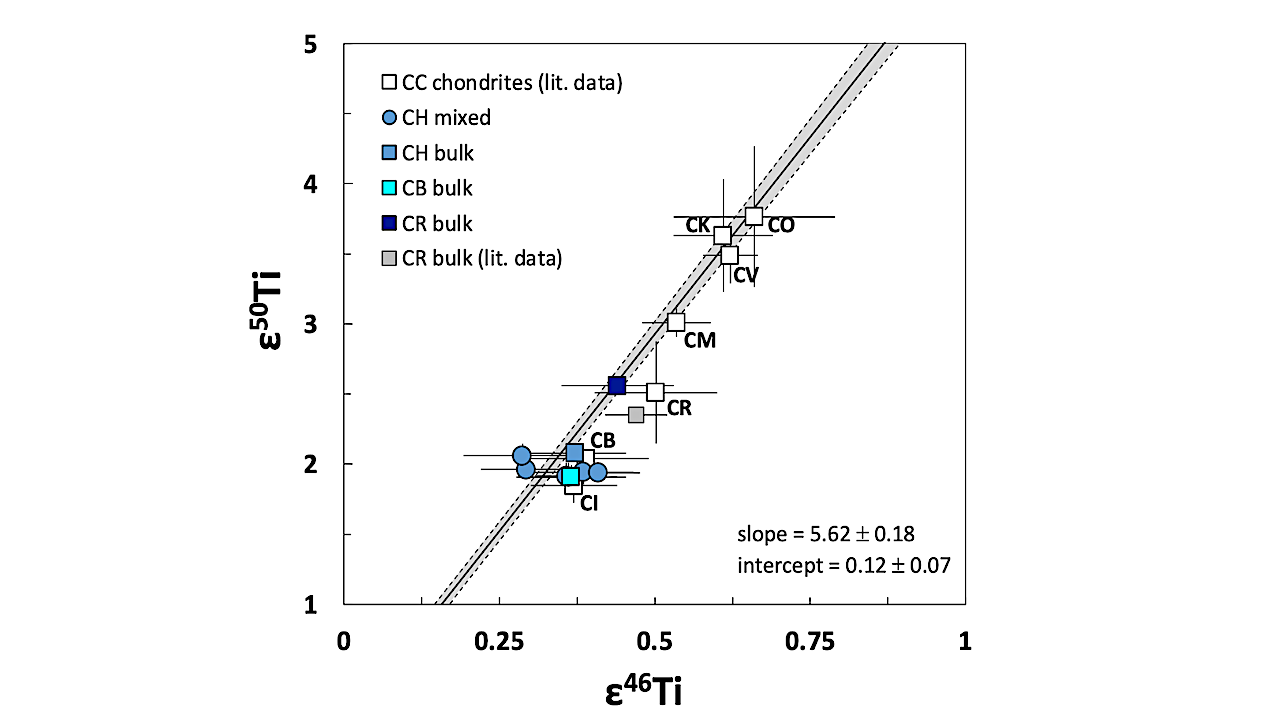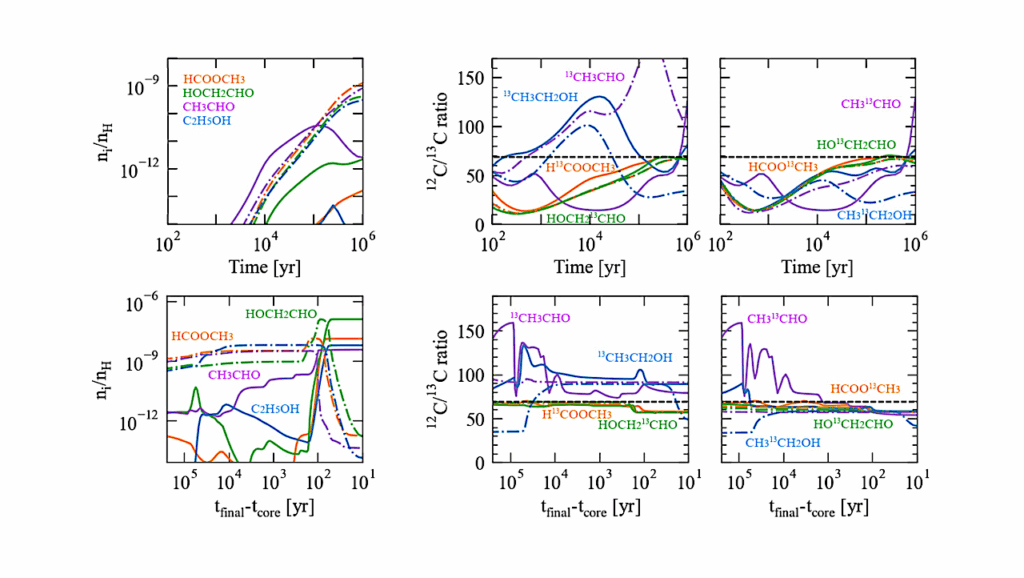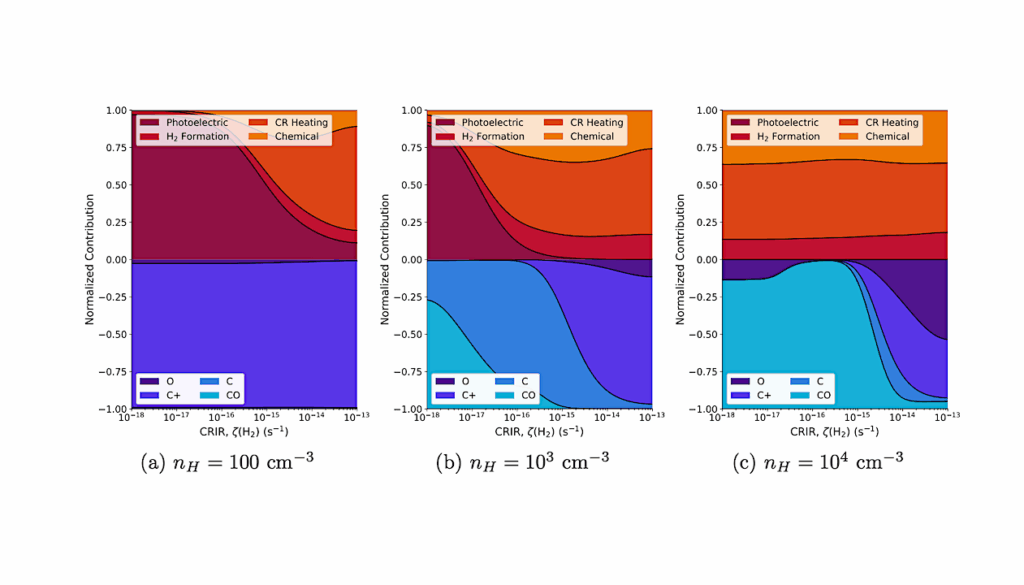Age And Genetic Relationships Among CB, CH and CR Chondrites

The carbonaceous Bencubbin-like (CB), high-metal (CH), and Renazzo-like (CR) chondrites are metal-rich chondrites that have been suggested to be genetically linked and are sometimes grouped together as the CR chondrite clan.
Of these, the CB and CH chondrites are thought to have formed in an impact-generated vapor-melt plume from material that may be isotopically akin to CR chondrites. We report Mo, Ti, Cr, and Hf-W isotopic data for CB and CH chondrites in order to determine their formation time, to assess whether these chondrites are genetically related, and to evaluate their potential link to CR chondrites.
An internal Hf-W isochron for the CH chondrite Acfer 182 yields an age of 3.8 +- 1.2 Ma after the formation of Ca-Al-rich inclusions (CAIs), which is indistinguishable from the mean Hf-W model age for CB metal of 3.8 +- 1.3 Ma. The Mo isotopic data for CB and CH chondrites indicate that both contain some of the same metal and silicate components, which themselves are isotopically distinct.
As such, the different Mo isotopic compositions of bulk CB and CH chondrites reflect their distinct metal-to-silicate ratios. CR metal exhibits the same Mo isotopic composition as CB and CH metal, but CR silicates have distinct Mo and Ti isotopic compositions compared to CB and CH silicates, indicating that CB/CH chondrites may be genetically related to CR metal, but not to CR silicates.
Together, the new isotopic data are consistent with formation of CB and CH chondrites in different regions of a common impact-generated vapor- melt plume and suggest that the CB and CH metal may derive from a metal-rich precursor genetically linked to CR chondrites. The Hf-W systematics of CH and CB chondrites indicate that the impact occurred at 3.8 +- 0.8 Ma after the formation of Ca-Al-rich inclusions and, hence, up to ~1 Ma earlier than previously inferred based on Pb- Pb chronology.
Elias Wölfer, Gerrit Budde, Thorsten Kleine
Comments: 54 pages, 8 figures, 5 tables
Subjects: Earth and Planetary Astrophysics (astro-ph.EP); Geophysics (physics.geo-ph)
Cite as: arXiv:2310.12749 [astro-ph.EP] (or arXiv:2310.12749v1 [astro-ph.EP] for this version)
Journal reference: Geochimica et Cosmochimica Acta, 2023
Related DOI:
https://doi.org/10.1016/j.gca.2023.10.010
Focus to learn more
Submission history
From: Elias Wölfer
[v1] Thu, 19 Oct 2023 13:52:38 UTC (1,618 KB)
https://arxiv.org/abs/2310.12749
Astrobiology, Astrochemistry








